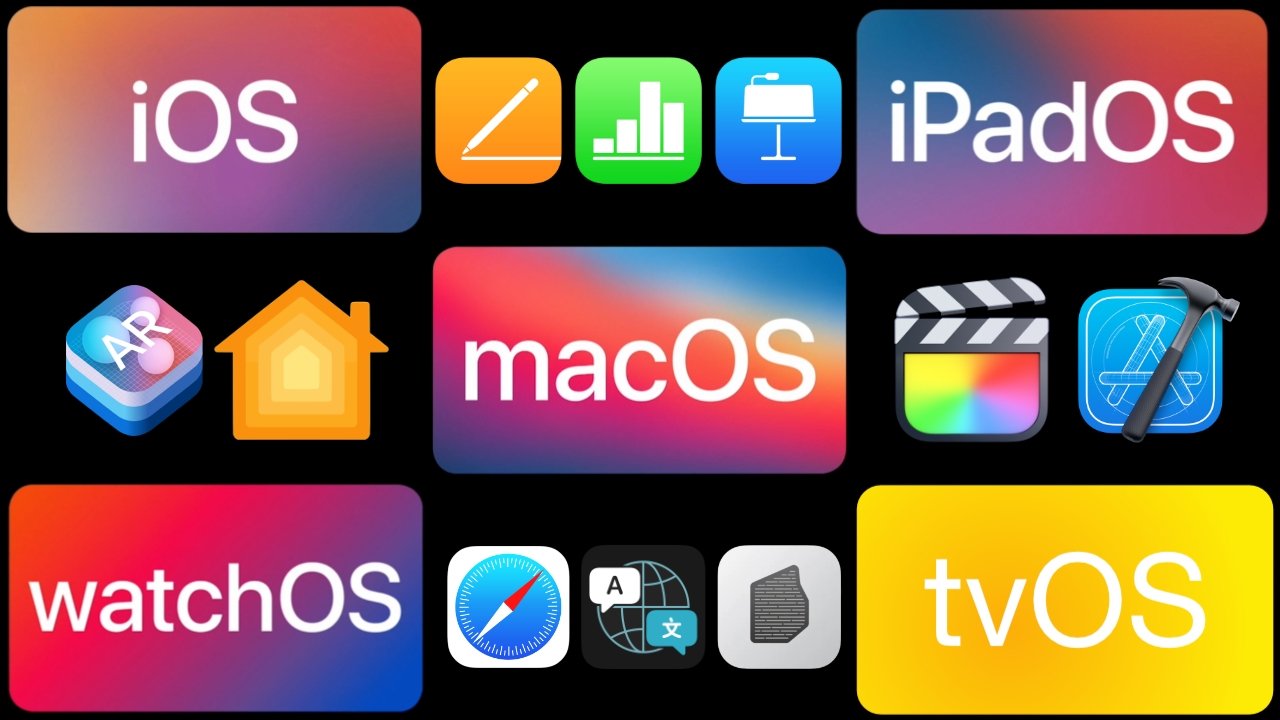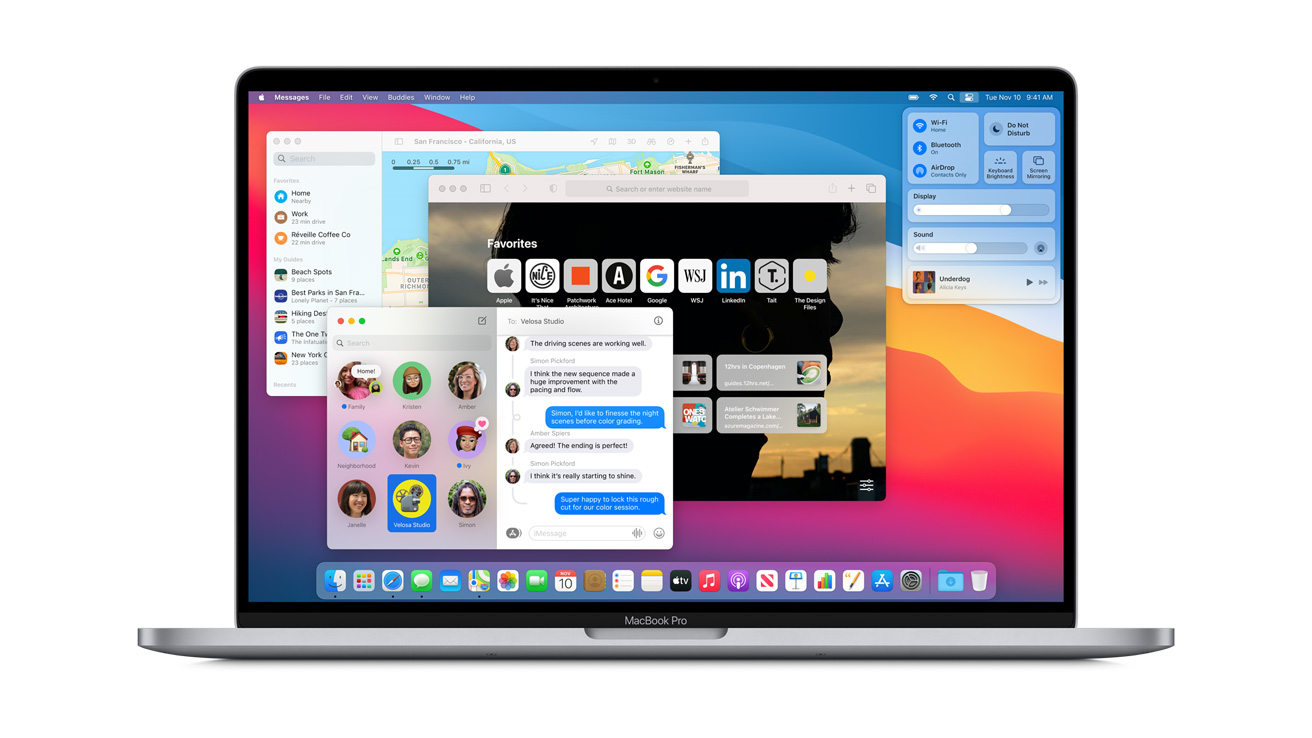Apple’s Software: macOS and iOS – The Backbone of Apple’s Ecosystem
Apple’s software ecosystem, built around macOS for desktop and iOS for mobile devices, is a fundamental pillar of the company’s success. These operating systems are designed to provide seamless integration with Apple hardware, creating a user experience that is both intuitive and powerful. But what makes macOS and iOS so unique, and how do they continue to evolve to meet the needs of consumers and professionals alike?
In this article, we’ll explore the features, benefits, and innovations that define macOS and iOS, offering insight into how these systems power Apple’s world-class products and drive the company’s ongoing success.

macOS is known for its sleek, user-friendly interface and powerful performance, making it a top choice for creatives and professionals alike.
The Evolution of macOS and iOS
Both macOS and iOS have undergone significant evolution since their inception, constantly improving in functionality, security, and user experience. Let’s take a look at how these operating systems have evolved over time.
1. macOS: From OS X to macOS Ventura
macOS, Apple’s desktop operating system, has gone through many stages of development. Initially launched as OS X in 2001, the system was designed to provide a stable Unix-based foundation with a visually appealing interface. Over the years, macOS has added a variety of features, such as Spotlight search, Mission Control, and Siri integration.
Key Milestones:
- OS X Mavericks (2013): Introduced the iCloud integration and made the system more energy-efficient.
- macOS Sierra (2016): Brought Siri to the Mac, along with improvements to Apple Pay and iCloud Drive.
- macOS Big Sur (2020): Marked a significant redesign of the interface, with smoother aesthetics, enhanced privacy features, and compatibility with Apple Silicon chips.
- macOS Ventura (2022): Enhanced collaboration features with Stage Manager, Continuity Camera, and Live Text, and deepened integration with other Apple products and services.

macOS Ventura brought a fresh interface, improved multitasking, and powerful productivity tools, making it one of the most efficient versions of macOS to date.
2. iOS: Revolutionizing Mobile Computing
iOS, Apple’s mobile operating system, has completely transformed the smartphone and tablet industries since its launch in 2007. iOS is known for its smooth performance, robust security features, and user-centric design, making it the system of choice for millions of users worldwide.
Key Milestones:
- iOS 1 (2007): Introduced the first iPhone, providing an intuitive touchscreen interface that redefined mobile technology.
- iOS 7 (2013): Marked the biggest redesign in iOS history, with a more modern, flat interface and new features like Control Center.
- iOS 9 (2015): Improved battery life, multitasking, and added Apple News and Apple Maps updates.
- iOS 14 (2020): Introduced App Clips, widgets on the home screen, and App Tracking Transparency for enhanced privacy.
- iOS 16 (2022): Focused on customization and privacy, with new lock screen features, Live Text, and Focus Mode for improved productivity.
macOS Features: Why it Stands Out
macOS has long been lauded for its unique features that cater to creative professionals, business users, and everyday consumers. Let’s dive deeper into some of the most important features that make macOS so beloved by users.
1. Continuity and Handoff
One of the standout features of macOS is its seamless integration with other Apple devices. With Handoff, you can start a task on your iPhone, like writing an email, and pick it up on your Mac without missing a beat. This continuity extends to features like Universal Clipboard, allowing you to copy something on your Mac and paste it onto your iPhone or iPad.
2. Powerful Multitasking
macOS has always been a great platform for multitasking. With features like Mission Control, Spaces, and Split View, you can organize your workspace and switch between tasks with ease. The introduction of Stage Manager in macOS Ventura has further refined the multitasking experience, offering a visual and organized way to manage apps and windows.
3. Apple Silicon Support
With the transition to Apple Silicon chips, like the M1, M2, and M3, macOS performance has skyrocketed. These chips offer outstanding processing power, efficiency, and battery life, giving users desktop-class computing on a portable machine.
4. Enhanced Security and Privacy
macOS has always emphasized security and privacy, with features like Gatekeeper, FileVault encryption, and App Privacy reports. The system includes built-in safeguards that protect against malware, tracking, and other online threats, making it one of the most secure operating systems available.
iOS Features: Empowering the Mobile Experience
Just as macOS is known for its desktop power, iOS brings the best of Apple’s ecosystem to mobile devices. With constant updates and improvements, iOS continues to push the boundaries of what mobile devices can do. Here are some of its most powerful features:
1. App Ecosystem and the App Store
The App Store is one of iOS’s greatest strengths. With over 2 million apps available, the App Store is the go-to platform for mobile applications. Whether you’re looking for productivity apps, games, or entertainment options, iOS provides access to some of the best apps available, with a focus on quality and security.
2. Privacy Features
With the increasing concern over personal data security, iOS has implemented several features to protect user privacy. These include App Tracking Transparency, which limits third-party app tracking, and Privacy Labels on the App Store, allowing users to see what data apps collect before downloading.
3. Widgets and Customization
iOS 14 introduced the ability to place widgets on the home screen, allowing users to customize their device to better fit their needs. With iOS 16, this customization has been taken even further with the new lock screen widgets and Focus modes, enabling users to tailor their device experience.
4. Focus and Productivity Features
iOS includes Focus Mode, which allows users to filter notifications and apps based on their current activity, whether working, exercising, or relaxing. This helps eliminate distractions, making iOS an excellent tool for productivity and concentration.

macOS Big Sur introduced a refreshed design and new features that pushed the system’s capabilities even further, creating a polished user experience.
The Synergy Between macOS and iOS
One of the most impressive aspects of Apple’s software ecosystem is the way macOS and iOS work together. Here are some ways Apple’s operating systems offer unparalleled synergy:
1. iCloud Integration
iCloud is the glue that holds the Apple ecosystem together, allowing seamless file syncing between your Mac, iPhone, iPad, and even Apple Watch. Whether you’re editing a document on your Mac or taking a photo on your iPhone, iCloud ensures that your files are available across all your devices.
2. Apple Watch Integration
If you’re using an Apple Watch, the synergy between iOS and macOS becomes even more powerful. With features like Unlock with Apple Watch and Fitness+, you can easily integrate your Mac and iPhone with your health and fitness routines.
macOS vs. iOS: Key Differences
While both operating systems share many similarities, they cater to different use cases. Here’s a quick comparison to help you understand the key differences between macOS and iOS:
| Feature | macOS | iOS |
|---|---|---|
| User Interface | Desktop-focused with windows and menus | Touch-focused with home screen and apps |
| Customization | Highly customizable with multiple desktops | Limited customization for the home screen |
| Multitasking | Advanced multitasking with multiple windows | Multitasking through split screen and Slide Over |
| App Ecosystem | Focus on desktop applications | Mobile-first apps optimized for touchscreen use |
FAQs About macOS and iOS
1. How often do macOS and iOS get updated?
Apple releases major updates for both macOS and iOS annually, with smaller security updates and bug fixes occurring throughout the year.
2. Can I run macOS apps on my iPhone?
No, macOS apps are designed specifically for desktop environments and are not compatible with **iOS
** devices. However, there are some apps available on both platforms, with iCloud syncing ensuring a seamless experience.
3. What’s the difference between iOS and iPadOS?
iPadOS is a version of iOS optimized for the larger screen of the iPad. It includes features like split-screen multitasking and Apple Pencil support, tailored for tablet users.
Conclusion
Apple’s macOS and iOS have set the standard for desktop and mobile operating systems, respectively. With continuous improvements in design, performance, and security, Apple’s software remains a powerful force in the tech world. Whether you’re a professional looking for powerful tools, a student needing an intuitive interface, or someone seeking privacy and security, macOS and iOS offer an unmatched experience.
As Apple continues to innovate, we can only expect these operating systems to evolve even further, bringing new features, enhanced interoperability, and a more connected world for Apple users. Stay updated with the latest news from Apple to explore even more possibilities.
Learn more about macOS features
Discover iOS updates

